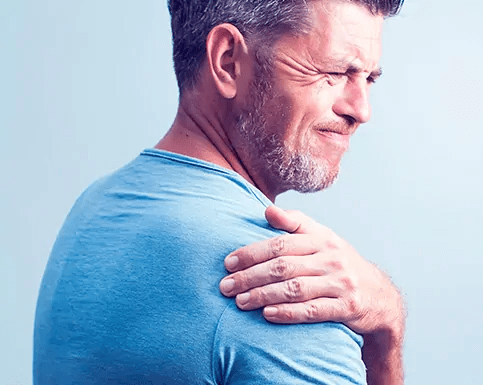Knee pain causes include tears in ligaments, arthritis, meniscus issues, inflammation of the kneecap tendon (tendonitis), osteoporosis and rheumatoid arthritis.
Pain in the knee joint is one of the most common types of pain; for example, in the UK, 18% of those aged 45 and over live with the discomfort of osteoarthritis of the knee, according to a Statista 2019 study.
Knee pain can affect you at any age and is not limited to older people. Injury, worn down cartilage, infection or medical conditions such as arthritis or tendonitis can all be root causes of knee pain. Do not self-diagnose – see a GP if you’re worried about your symptoms.
The function of the knee is to bend and straighten the leg while bearing body weight together with the hips and the ankle. In order to perform all of these movements and support the body, the knee relies on several structures, bones, tendons and cartilages.
Understanding the anatomy of the knee joint
The knee joint comprises four essential bones: the femur (thigh bone), tibia (shin bone), fibula, and patella (kneecap). Four ligaments connect the thigh bone to the calf, providing stability: the anterior cruciate ligament (ACL) and posterior cruciate ligament (PCL) prevent the femur and tibia from sliding too far forward or backward, while the medial collateral (MCL) and lateral collateral ligaments (LCL) limit side to side movement of the joint.
What are the causes of knee pain?
Pain in the knee can be from several sources – mechanical, trauma, injury or inflammation.
Kneecap dislocation
When the kneecap moves out of place, dislocation occurs.
Trauma
Direct trauma can damage structural elements, leading to tears in tendons or menisci, common in sports-related injuries.
Osteoarthritis – Breakdown of knee joint cartilage
The most common form of joint inflammation, osteoarthritis, affects weight-bearing joints, causing cartilage breakdown in the knee.
Types of inflammation
Inflammation types include: rheumatoid arthritis, gout, infected inflammation of the knee and inflammation of the kneecap. Several types of infection can develop in the knee joint causing pain and sometimes damaging tissue in the knee.
Symptoms
Symptoms vary based on the cause. Signs and symptoms that may accompany knee pain:
- Swelling and rigidity
- Redness and warm to the touch
- Weakness or instability
- Popping or cracking sounds
- Inability to straighten the knee
Methods for treating knee pain:
- Physical therapy
- Surgery: arthroscopic surgery or knee replacement
- Knee pain treatment with low-level laser: B-Cure Laser
B-Cure Laser offers effective, non-invasive treatment for knee pain, by harnessing advanced laser technology. It stimulates cellular regeneration, increases collagen production, improves blood circulation, and reduces inflammation.
B-Cure Laser provides breakthrough laser therapy, offering the power of some professional lasers as used in clinics, in a lightweight portable device that can be used from the comfort of home.
Treatment is safe, effective and can provide lasting pain relief
B-Cure Laser’s restorative power is provided by advanced laser technology.
B-Cure Laser should be placed in contact with the skin allowing the photon energy to penetrate the tissues. This stimulates the body to produce adenosine triphosphate otherwise known as ATP, which carries energy within the cells. The ATP interacts with various biomolecules inside the cells promoting normal cell function and enhancing the body’s natural processes.
Patients recover from muscular, skeletal and nerve injuries as cells regenerate faster and function better.

What are the therapeutic effects of low-level laser therapy (LLLT)?
Low-level laser therapy, also known as cold laser therapy, is a non-invasive light-source treatment designed to alleviate discomfort from various musculoskeletal conditions, including knee pain. It employs low-level lasers to stimulate cellular function and accelerate healing. This therapy yields several potential benefits:
- Increased production of Adenosine Triphosphate (ATP)
- Increased cellular metabolism
- Increased collagen production
- Increased enzyme production
- Increased protein synthesis
- Improved blood circulation
- Improved lymphatic flow and drainage
- Reduced inflammation
All this serves to boost the body’s natural healing power, targeting the root causes of pain and providing rapid relief.
B-Cure Laser is unique due to its highly-targeted 4.5 cm beam, enabling quick, easy and effective treatment for a wide range of painful conditions. Moreover, it is available for home use, proven clinically effective and safe and comes with no known side effects, offering a non-invasive solution to the discomfort of knee pain.
B-Cure Laser is now available for home use and has been proven clinically effective and safe. The treatment has no known side effects and is a non-invasive method for treating orthopaedic conditions.
What are the benefits of B-Cure Laser therapy?
- Reduces chronic pain when used regularly
- Non-invasive and safe for all ages
- Clinically proven efficacy
- Easy and safe for home use
Treatment protocol
Apply B-Cure Laser to four main treatment points for 8 minutes each:
- Along the inner side of the knee.
- The outer side of the knee.
- The back of the knee.
Should you feel pain at the front of the knee, apply the device to the area under the kneecap.
A custom-made adjustable stand makes treatment more convenient. As a result, you can deliver relief without the need to move and allow the laser beam to penetrate deep into the affected tissues.
For optimal results, repeat the treatment at least twice a day.




